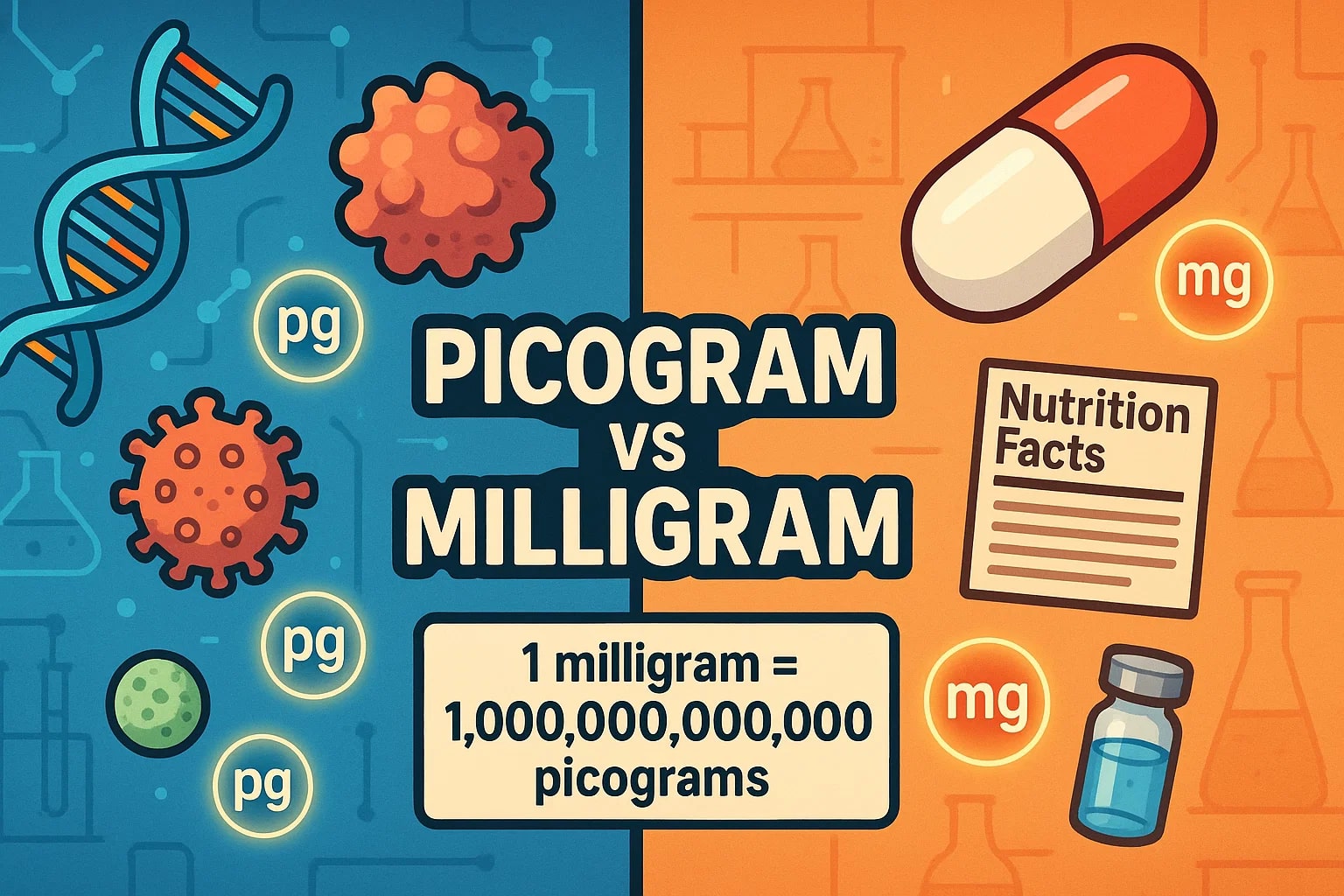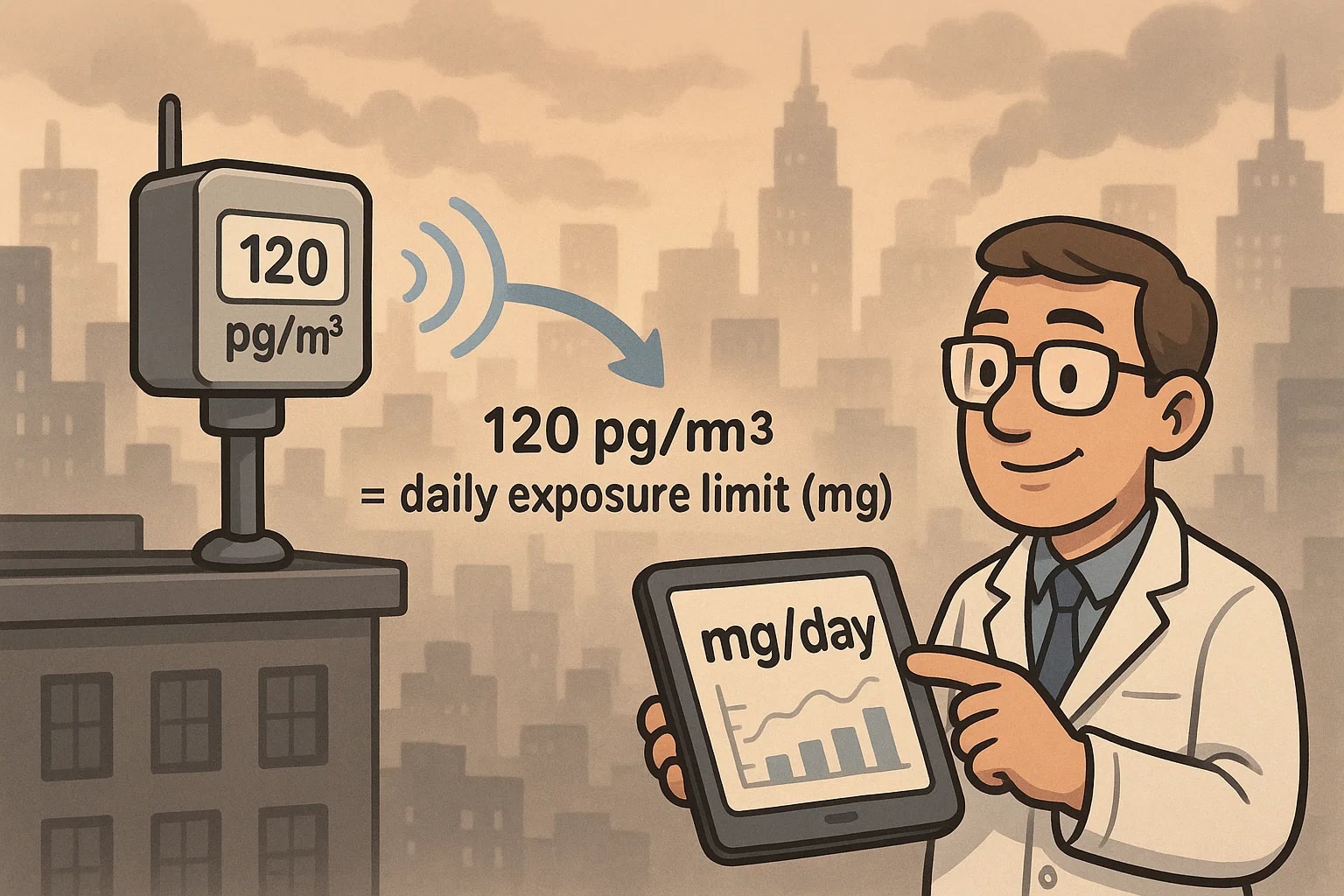picogram to milligram - How to convert pg to mg
The picogram (pg) is one of the tiniest units of mass used in modern science. It’s essential in molecular biology, nanochemistry, and environmental safety. But in many cases, results need to be scaled up to milligrams (mg) — a more practical, trackable unit for lab reports, medicine, and regulations.
Let’s explore what these units are, how to convert them, and why it matters in real-world applications.

What are picograms and milligrams?
A picogram (pg) is a metric unit of mass equal to one-trillionth of a gram. This unit is typically used when measuring trace biomolecules (e.g., DNA, RNA, proteins), pollutants in air or water, nanoparticles, and high-precision drug compounds.
It’s too small for most daily applications, but it's the gold standard in biotech and lab environments. F
A milligram (mg) is a unit of mass equal to one-thousandth of a gram. Milligrams are used widely in prescription medications, nutritional content labels, chemical compositions, and engineering specs
It’s a key unit in healthcare and science, ideal for summarizing values that are too large to remain in the picogram scale.
Use our weight converter for mg conversions involving other units.
How to Convert pg to mg
To convert picograms to milligrams, you need to know:
milligrams = picograms × 10⁻⁹
For example:
-
2,000,000,000 pg = 2 mg
-
750,000,000 pg = 0.75 mg
Jetcalculator’s conversion tools will handle this instantly, no matter how large or precise your numbers are.
Did You Know?
-
A nanogram contains 1,000 picograms, and many viruses weigh less than 1 pg. That’s why mass spectrometry in virology and genomics uses this unit regularly.
-
The difference between a therapeutic and toxic drug dose is sometimes just a few milligrams. Dosage adjustments are critical in treatments like chemotherapy or hormone therapy.
-
In a modern DNA sequencer, picograms of DNA are enough to generate full genomic profiles, making it essential for forensics and ancestry testing.
-
The average tablet of paracetamol (acetaminophen) contains 500 mg — or 500,000,000,000 picograms. Conversions like this matter in drug development and pill formulation.
From pg to mg in Environmental Safety
In a 2020 study on urban pollution in Southeast Asia, researchers used sensors to measure dioxin concentrations as low as 120 pg/m³ in city air. To translate that data into safe exposure thresholds, health authorities converted those readings into mg/day inhaled doses, adjusted by population and activity level.
This kind of scaling — from pg to mg — is critical for public health modeling, toxicology, and policy planning worldwide.

Conclusion
Converting picogram to milligram (pg to mg) may seem technical, but it's crucial in everything from lab science to environmental regulation. With a conversion ratio of 1 mg = 1,000,000,000 pg, you can easily switch between micro-level data and report-ready values.

